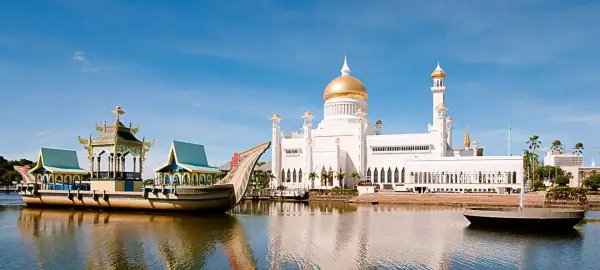Small Group Experiential Travel
Tour Code
MA5 When To Go
Mar Start
Kuala Lumpur (KUL) End
Denpasar (DPS) Countries Visited (3)
Brunei Darussa...More > Overnight In (13)
Bandar Seri Be...More > Activity Level
2 - Moderate? Tour Type
Cultural? - Overview
- Info & Inclusions
- Itinerary
- Map & Hotels
- Photos
- Dates & Prices
Highlights
- Max Group Size 18
- Bustling Kuala Lumpur - city tour
- Historic Malacca tour
- Kuching: City Tour & Sarawak Cultural Village
- Kinabatangan River nature cruise
- Sepilok Orang Utan Sanctuary
- Brunei Darussalam area tour
- Borobudur: largest stupa-style Buddhist monument in the world
- Prambanan: most extensive Hindu temple site in Indonesia
- Bali - island paradise
- Lake Toba & Samosir island
- Singles friendly (view options for single travellers)
Description
Diverse doesn't begin to describe the wonders in store during this 27 day Malaysia and Indonesia tour.
National parks teeming with wildlife, the UNESCO World Heritage town of Malacca, a teeming potpourri of Asian and aboriginal culture and the Old and New World collision that is Kuala Lumpur beckons in Malaysia.
Indonesia, for its part, offers far more than just the legendary beach in Bali. This equatorial country features awe inspiring sights at every turn, whether it's an intricate Hindu temple surrounded by lush, terraced rice paddies or a laconic orangutan reaching for a tender shoot in the jungles of Borneo.
Combined, the countries form the crux of a once in a lifetime vacation that should be on any adventurous traveller's to do list.
In Malaysia's capital, Kuala Lumpur, you'll be hard pressed to miss the iconic Petronas Towers, the tallest pair in the world at 88 stories each. Particularly impressive at night, Islamic influences can be seen in each of the tower's five tiers representing the five pillars of Islam. Unparalleled shopping experiences can be found in the glittery malls or street-side in bustling Chinatown. Included in the city tour is a visit to the National Museum.
Up next, Malacca, that features a dizzying array of cultural touchstones owing to its history as a trading port and successive colonial occupations, each one leaving its mark. See the Stadhuys, a collection of red hued buildings from the 1650s that once housed the Dutch town hall.
Also in the famous town square is the Portuguese fortress of Porta de Santiago and St. Paul's Church, resting place of St Francis Xavier. Nearby, the 17th-century Chinese Cheng Hoon Teng temple has ornate decorations and multiple prayer halls. And don't forget to try some of the ubiquitous spicy food that often combines influences from disparate culinary traditions.
Our Malaysia and Indonesia tours continues on to Kuching and a visit to the nearby, living museum of Sarawak Cultural Village that depicts the heritage of the myriad ethnic groups known to the region amid a spectacular equatorial backdrop. A second day trip from Kuching saves time along the way to better understand some of the jungle produce so crucial to the local economies and culminates with a visit to a longhouse dwelling typical of the area. Finally there's a tour of Kuching proper, a city noted for the bustle of its many artisans and tradespeople practicing their craft in ways virtually unchanged since the 19th century. Other highlights here include a Taoist temple and the breathtaking Catholic Cathedral.
Onwards to Miri, the gateway to Borneo, for an overnight before driving to Niah National Park. Featuring remains of people dating back 40,00 years, and the spectacular Grand Cave with its Iron Age cave paintings, the site is among the world's most important archeological sites.
Day 8 brings you to the heavily forested Brunei and a sightseeing tour of the imposing golden-domed Jame Asr Hassani Bolkiah Mosque, ahead of an afternoon cruise to the enormous water village of Kampung Ayer. Also on the itinerary in Brunei is Istana Nurul Iman, largest, residential palace on Earth and a visit to the Royal Regalia Building.
A drive through the Crocker Range soon immerses tour participants in the abundant biodiversity of Kundasang's Mountain Garden, followed by an exhilarating rainforest canopy walk in Poring.
Your immersion in the jungle continues in Sandakan, home to the world's largest orangutan sanctuary with plenty of time allotted to familiarize yourself with these iconic, orange, forest dwellers and their care. That's followed by stay at a rainforest lodge and a cruise up the Kinabatangan River to view even more of the fauna and flora of this astonishing region including the aptly named proboscis monkey.
Following a return to the teeming waterfront markets of Sandakan, our Malaysia and Indonesia tour continues in Sumatra's largest city, Medan, with its remnants of Dutch colonialism and plethora of shops. A short city tour is followed by a boat cruise and full day at Samosir Island; an island within an island in Lake Toba formed by a super volcano some 75,000 years ago. Of note here is the distinctive animist culture of the local Batak people.
Next, it's on to Beraslagi, after crossing from the island on a narrow land bridge and with time for a stop at the impressive and picturesque (nearly 400 foot tall) Si Piso-Piso Waterfalls. On the same day visit a Karo Batak village in this highly volcanic area.
Yogyakarta, in the heart of Java at the base of a volcano, is the next destination. It's the base for visitation of Indonesia's most famous and extensive Hindu temple site Prambanan. Built in the 10th century, this UNESCO Heritage site is the largest temple compound dedicated to Shiva in Indonesia.
Three tall and pointed temples are decorated with reliefs illustrating the epic of the Ramayana, in honour of the three great Hindu divinities and three temples are dedicated to the animals who serve them. Back in Yogyakarta sightseeing continues with The Sultan's Palace -that includes the Golden Pavilion - and the nearby Taman Sari (Water Castle) with its ruins, pools and underground passages among the highlights.
Prepare to be impressed by the next attraction, Borobudur, largest stupa-style Buddhist monument in the world. Laid out in the form of a lotus, the temple compounds with its stepped, unroofed pyramid consisting of ten terraces, crowned by a large, bell-shaped dome is a harmonious marriage of stupas, temple and mountain and a masterpiece of Buddhist architecture.
Iconic Bali (home to the majority of Indonesia's Hindu population) follows, beginning in the east coast town of Candidasa. After a visit to the native, walled village of Tenganan, its on to the ancient law courts of Klung Klung and finally Bali's most significant temple Besakih.
En route to Lovina, located on the northeastern side of the island, stops are made at the village of Penglipuran; Kintamani, with its scenic views of Mt. Batur and Lake Batur and Beji Temple, notable for its Barong architecture and stunning relief carvings.
A day is then set aside back in Lovina for exploration of nearby markets and exploration of the Buddhist monastery Brahma Arama Vihara.
After travel through the amazing rice terraces at Pupuan, it's on to the mysterious and alluring artists' village of Ubud. Ubud is known for its spiritualists and seekers. The size of the town's expat community attests to this, as do the many novels and films set here.
It's a place where traditional Balinese culture imbues every waking moment. An artist's haven, it's the best place to buy Balinese handicrafts and a fitting place to end what will surely be remembered as the holiday of a lifetime.
National parks teeming with wildlife, the UNESCO World Heritage town of Malacca, a teeming potpourri of Asian and aboriginal culture and the Old and New World collision that is Kuala Lumpur beckons in Malaysia.
Indonesia, for its part, offers far more than just the legendary beach in Bali. This equatorial country features awe inspiring sights at every turn, whether it's an intricate Hindu temple surrounded by lush, terraced rice paddies or a laconic orangutan reaching for a tender shoot in the jungles of Borneo.
Combined, the countries form the crux of a once in a lifetime vacation that should be on any adventurous traveller's to do list.
In Malaysia's capital, Kuala Lumpur, you'll be hard pressed to miss the iconic Petronas Towers, the tallest pair in the world at 88 stories each. Particularly impressive at night, Islamic influences can be seen in each of the tower's five tiers representing the five pillars of Islam. Unparalleled shopping experiences can be found in the glittery malls or street-side in bustling Chinatown. Included in the city tour is a visit to the National Museum.
Up next, Malacca, that features a dizzying array of cultural touchstones owing to its history as a trading port and successive colonial occupations, each one leaving its mark. See the Stadhuys, a collection of red hued buildings from the 1650s that once housed the Dutch town hall.
Also in the famous town square is the Portuguese fortress of Porta de Santiago and St. Paul's Church, resting place of St Francis Xavier. Nearby, the 17th-century Chinese Cheng Hoon Teng temple has ornate decorations and multiple prayer halls. And don't forget to try some of the ubiquitous spicy food that often combines influences from disparate culinary traditions.
Our Malaysia and Indonesia tours continues on to Kuching and a visit to the nearby, living museum of Sarawak Cultural Village that depicts the heritage of the myriad ethnic groups known to the region amid a spectacular equatorial backdrop. A second day trip from Kuching saves time along the way to better understand some of the jungle produce so crucial to the local economies and culminates with a visit to a longhouse dwelling typical of the area. Finally there's a tour of Kuching proper, a city noted for the bustle of its many artisans and tradespeople practicing their craft in ways virtually unchanged since the 19th century. Other highlights here include a Taoist temple and the breathtaking Catholic Cathedral.
Onwards to Miri, the gateway to Borneo, for an overnight before driving to Niah National Park. Featuring remains of people dating back 40,00 years, and the spectacular Grand Cave with its Iron Age cave paintings, the site is among the world's most important archeological sites.
Day 8 brings you to the heavily forested Brunei and a sightseeing tour of the imposing golden-domed Jame Asr Hassani Bolkiah Mosque, ahead of an afternoon cruise to the enormous water village of Kampung Ayer. Also on the itinerary in Brunei is Istana Nurul Iman, largest, residential palace on Earth and a visit to the Royal Regalia Building.
A drive through the Crocker Range soon immerses tour participants in the abundant biodiversity of Kundasang's Mountain Garden, followed by an exhilarating rainforest canopy walk in Poring.
Your immersion in the jungle continues in Sandakan, home to the world's largest orangutan sanctuary with plenty of time allotted to familiarize yourself with these iconic, orange, forest dwellers and their care. That's followed by stay at a rainforest lodge and a cruise up the Kinabatangan River to view even more of the fauna and flora of this astonishing region including the aptly named proboscis monkey.
Following a return to the teeming waterfront markets of Sandakan, our Malaysia and Indonesia tour continues in Sumatra's largest city, Medan, with its remnants of Dutch colonialism and plethora of shops. A short city tour is followed by a boat cruise and full day at Samosir Island; an island within an island in Lake Toba formed by a super volcano some 75,000 years ago. Of note here is the distinctive animist culture of the local Batak people.
Next, it's on to Beraslagi, after crossing from the island on a narrow land bridge and with time for a stop at the impressive and picturesque (nearly 400 foot tall) Si Piso-Piso Waterfalls. On the same day visit a Karo Batak village in this highly volcanic area.
Yogyakarta, in the heart of Java at the base of a volcano, is the next destination. It's the base for visitation of Indonesia's most famous and extensive Hindu temple site Prambanan. Built in the 10th century, this UNESCO Heritage site is the largest temple compound dedicated to Shiva in Indonesia.
Three tall and pointed temples are decorated with reliefs illustrating the epic of the Ramayana, in honour of the three great Hindu divinities and three temples are dedicated to the animals who serve them. Back in Yogyakarta sightseeing continues with The Sultan's Palace -that includes the Golden Pavilion - and the nearby Taman Sari (Water Castle) with its ruins, pools and underground passages among the highlights.
Prepare to be impressed by the next attraction, Borobudur, largest stupa-style Buddhist monument in the world. Laid out in the form of a lotus, the temple compounds with its stepped, unroofed pyramid consisting of ten terraces, crowned by a large, bell-shaped dome is a harmonious marriage of stupas, temple and mountain and a masterpiece of Buddhist architecture.
Iconic Bali (home to the majority of Indonesia's Hindu population) follows, beginning in the east coast town of Candidasa. After a visit to the native, walled village of Tenganan, its on to the ancient law courts of Klung Klung and finally Bali's most significant temple Besakih.
En route to Lovina, located on the northeastern side of the island, stops are made at the village of Penglipuran; Kintamani, with its scenic views of Mt. Batur and Lake Batur and Beji Temple, notable for its Barong architecture and stunning relief carvings.
A day is then set aside back in Lovina for exploration of nearby markets and exploration of the Buddhist monastery Brahma Arama Vihara.
After travel through the amazing rice terraces at Pupuan, it's on to the mysterious and alluring artists' village of Ubud. Ubud is known for its spiritualists and seekers. The size of the town's expat community attests to this, as do the many novels and films set here.
It's a place where traditional Balinese culture imbues every waking moment. An artist's haven, it's the best place to buy Balinese handicrafts and a fitting place to end what will surely be remembered as the holiday of a lifetime.
Price Includes
- Full-time Tour Leader with local guide support at some locations.
- Breakfast daily and most dinners (at local restaurants and some hotels). For logistical reasons and due to the nature of our sightseeing activities, we include lunch instead of dinners some days (please refer to the day -by-day itinerary).
- All transport, accommodation, sightseeing and entrance fees for sites noted as 'visited' in the detailed itinerary. Gratuities for drivers, restaurant staff, porters, local guides.
- Airport transfers for land & air customers and for early arriving / late departing land & air customers who book their extra hotel nights through us.
Exclusions
- International airfare to/from the tour.
- Tour Leader gratuities, most lunches & some dinners (see tour itinerary), drinks, personal items (phone, laundry, etc), domestic and international (if applicable) air taxes, and any excursions referenced as 'optional'.
- Airport transfers for Land Only customers.
- Optional trip cancellation insurance.
Trip Info
- Seasonality and Weather:
MALAYSIA: Two main seasons are experienced in Borneo, a rainy season and a dry. The rainy season generally lasts from Oct to Feb while the drier, cooler period spans from March/April to Sept. Anyone travelling in any part of Borneo should be aware, however, that rain still does fall frequently even during the 'dry season' and visitors should pack good quality wet-weather gear.
INDONESIA: Tropical climate varying from area to area; rainstorms occur all year. Higher regions are cooler.
Though the above mentions seasonal differences, the entire region covered by our tour will feature hot and humid conditions at any time. - Transport and Travel Conditions:
Land transport throughout will be by private air-conditioned bus. Most of the driving days are not long, usually no more than four hours. Internal flights via scheduled regional carriers.
The tour is not strenuous though it is busy; you must be steady on your feet and be able to endure some heat and long days. We have numerous walking tours and visit several sites that are LARGE with steps and uneven surfaces.
Porters are available at hotels but you must be able to manage with your baggage at airports.
Am I suitable for this tour? Please refer to our self-assessment form - Activity Level: 2
These are particularly busy tours that feature a lot of moving around, sometimes by train and short journeys on local transport. Walking tours of towns and cities are leisurely but you should be prepared to be on your feet for several hours. Some of our cultural trips that occur at high altitude and/or require greater independence with baggage handling (at hotels, airports, train stations) also fall into this category.
To learn more about the Activity levels, please visit our tour styles page. - Accommodation:
Hotels used on tour are modern, comfortable, well-located, air-conditioned, 3-4 star properties with en suite bath / toilet. Single rooms are limited and possibly smaller than twins. Laundry facilities are available at most hotels for a reasonable price. Safe deposit boxes are available in most hotels either free or for a nominal fee. All are air-conditioned. - Staff and Support:
Tour Leader throughout, local guides, local driver/s. - Group Size:
Maximum 18 (plus Tour Leader)
View / Print Itinerary
- Day 1:Arrival in Kuala LumpurWelcome to Kuala Lumpur, Malaysia's capital and a city that embodies Southeast Asia's blend of tradition and modernity. The name means "muddy confluence" in Malay - an apt description for a settlement that began in the 1850s as a rough tin-mining camp at the meeting point of the Klang and Gombak rivers. Chinese miners arrived first, followed by Malay, Indian, and European traders, creating the multicultural character that defines the city today. This diverse heritage remains visible in distinct neighbourhoods - a vibrant Chinatown, an Indian quarter, and Malay kampungs exist alongside gleaming skyscrapers.
This evening we gather with fellow travellers for our first meal together.
Overnight in Kuala Lumpur.
Included Meal(s): Dinner, if required - Day 2:Kuala Lumpur: City TourDespite rapid development, Kuala Lumpur has retained considerable charm, with a skyline that blends colonial-era buildings and contemporary towers. We start at Menara Kuala Lumpur, the communications tower offering panoramic views across the city from 421 metres (1,381 feet) above sea level. From this vantage point, the contrast becomes clear - Indo-Moorish architecture from the British colonial period sits alongside the ultra-modern Petronas Twin Towers, which held the title of world's tallest buildings from 1998 to 2004.
We drive past the elegant Jamek Mosque, occupying the symbolic birthplace of Kuala Lumpur at the river confluence, and the bustling Chinatown at Petaling Street before a photo stop at the Istana Negara, the majestic Royal Palace.
After lunch we visit the National Museum, where exhibits trace Malaysian history from prehistoric times through colonial rule to independence. Time permitting, we stroll through the Lake Gardens, a colonial-era park located near the National Monument and Merdeka Square, where Malaysia's independence was declared in 1957.
Overnight in Kuala Lumpur.
Included Meal(s): Breakfast and Dinner - Day 3:Kuala Lumpur & MalaccaAfter breakfast we depart for Malacca, founded by a fleeing Sumatran prince in the 14th century. The city developed into a major trading port where ships from India and China converged, drawn by Malacca's strategic position controlling the strait that bears its name. From its early days as a traders' meeting point through successive colonial occupation by the Portuguese, Dutch, English, and Japanese, each culture left monuments and architectural influences. Today the city displays remnants of more than 500 years of layered history.
As the oldest established town in Malaysia, Malacca is particularly famous for its Town Square and surrounding monuments. We visit the red-coloured Stadhuys, built by the Dutch in 1650 and believed to be the oldest surviving Dutch building in the East. At Cheng Hoon Teng, the oldest Chinese temple on the Malay peninsula dating from 1673, we see how Chinese immigrants maintained their religious traditions. We explore the Portuguese fortress Porta de Santiago, built in 1511 - one of the few remaining Portuguese structures - and St Paul's Church on the hill above, where St Francis Xavier was temporarily buried in 1553.
Malacca is renowned for its Nyonya-Baba cuisine, a unique fusion created by the Peranakan people - descendants of Chinese immigrants who married local Malays. The cuisine blends Chinese cooking techniques with Malay spices and ingredients, along with Portuguese, Dutch, Indian, and British influences, creating dishes that are typically spicy and aromatic.
NOTE: Due to our likely early departure tomorrow morning, we include lunch today instead of dinner.
Overnight in Kuala Lumpur.
Included Meal(s): Breakfast and Lunch - Day 4:Kuala Lumpur - Fly to Kuching, Sarawak (Borneo)Today we fly to Kuching in Sarawak, located in northwestern Borneo.
This afternoon we explore Kuching, arguably one of Southeast Asia's most attractive cities. Despite modern development, the city has retained its old trading centre charm. Once home to the White Rajahs Brooke - an English family who ruled Sarawak as an independent kingdom from 1841 to 1946 - their legacy remains evident in buildings still in use today. Our tour includes the Cat Monument celebrating Kuching's feline namesake (kucing means cat in Malay), the Tua Pek Kong Temple, Sarawak's oldest Taoist temple dating from 1876, and the award-winning Catholic Cathedral. We visit the multi-purpose market where tinsmiths, rattan workers, coffin makers, Chinese herbalists, and goldsmiths ply their trades in a setting little changed from the 19th century. A highlight is the Borneo Cultures Museum, opened in 2022 and showcasing Sarawak's diverse indigenous cultures through extensive collections of artifacts, textiles, and historical exhibits.
We end the day at the Kuching waterfront. The Sarawak River remains central to the city's character, and the beautifully landscaped waterfront promenade provides a relaxing venue for strolls at any time of day.
Overnight in Kuching.
Included Meal(s): Breakfast and Dinner - Day 5:Kuching & Longhouse VisitEarly this morning we depart Kuching by road for a longhouse, an extended family dwelling where many families live under a single roof. Traditional longhouses feature an open verandah running the building's length, offering views of paddy fields, rubber plantations, and surrounding forest. While Sarawak's urban areas have largely modernised, rural regions still maintain longhouse communities where life remains simpler and more closely connected to nature.
We're greeted with a welcome dance followed by a walk through the community, where we experience various cultural performances including traditional dancing and drumming. Longhouses represent a communal way of life that predates modern Sarawak, with families sharing resources and responsibilities while maintaining individual living spaces within the larger structure. The architectural design - raised on stilts with covered walkways - reflects centuries of adaptation to Borneo's climate and terrain.
We return to Kuching in the late afternoon.
Overnight in Kuching.
Included Meal(s): Breakfast and Lunch - Day 6:Kuching: City Tour - Fly to MiriThis morning we visit the Sarawak Cultural Village, an award-winning living museum set within 14 acres of equatorial vegetation. The village depicts the heritage of Sarawak's major ethnic groups through authentic traditional houses representing different communities - Bidayuh, Iban, Orang Ulu, Malay, Chinese, and Melanau. Craftspeople demonstrate traditional skills including weaving, carving, and sago processing, while cultural performances showcase the music and dance of each group. The village provides an accessible introduction to Sarawak's remarkable ethnic diversity, where over 40 sub-ethnic groups maintain distinct languages, customs, and architectural traditions.
This afternoon we fly to Miri, still in Sarawak, an oil town with its own interesting history and our gateway to the neighbouring country of Brunei.
Overnight in Miri.
Included Meal(s): Breakfast and Dinner - Day 7:Miri & Niah National Park and the Great CaveThis morning we drive 110 kilometres to Niah National Park. Although one of Sarawak's smallest national parks at just 31 square kilometres, it ranks among the most important archaeological sites in the world. In 1958, archaeologist Tom Harrisson discovered human remains dating back 40,000 years - the oldest modern human remains in Southeast Asia. The discoveries, along with stone tools, pottery, and shell ornaments, revealed that the caves had been continuously inhabited longer than anywhere else in Southeast Asia.
After registration at the park headquarters and a brief visit to the information centre, we take a short boat across the river to the Niah Museum. Following our museum visit, we walk three kilometres along a level boardwalk to the main cave entrance. The 45-minute walk proves fascinating as we pass enormous Tapang trees with their buttressed roots, pandanus plants, orchids, and colourful tree fungi.
In the Painted Cave we see prehistoric wall drawings and preserved remains of Stone Age burials dating back 40,000 years. The Great Cave, an enormous cavern surrounded by dense primary rainforest, served not only as an important archaeological site but remains home to millions of bats and birds, especially Black-nest Swiftlets whose nests are harvested for bird's nest soup.
NOTE: This excursion requires stamina and steady footing to navigate uneven, possibly wet surfaces, and the ability to endure heat over several hours. Due to our day's length and late lunch timing, we don't include dinner this evening.
Overnight in Miri.
Included Meal(s): Breakfast and Lunch - Day 8:Miri, Malaysia - Brunei DarussalamA two-hour drive this morning takes us to Brunei, a small oil-rich nation in Borneo's northwest corner, bounded on all landward sides by Sarawak. The landscape consists mainly of equatorial jungle cut by rivers, with most human activity restricted to coastal areas and estuaries.
Today's sightseeing includes the magnificent Jame Asr Hassanil Bolkiah Mosque. The mosque, with its golden domes, mosaic patterns, and imposing minarets plated with 24-carat gold, was built to commemorate the Sultan's 25th year of reign. The building accommodates 5,000 worshippers and exemplifies the wealth that oil revenues have brought to this tiny sultanate.
In the afternoon we cruise to Kampung Ayer, the water village continuously inhabited since at least 1521. When Portuguese explorer Ferdinand Magellan's crew arrived that year, they called it the "Venice of the East." Today around 30,000 people still live in traditional stilt houses built over the Brunei River, though modern amenities like electricity and running water now reach most homes. The village represents a way of life maintained across centuries, with schools, mosques, and shops all constructed on stilts above the water.
Our city tour also includes views of the Omar Ali Saifuddien Mosque, completed in 1958 and named after the 28th Sultan, and a visit to one of the local markets.
NOTE: Though unlikely, mosques can close at any time without notice due to security concerns, maintenance, or official visits by dignitaries or members of the royal family.
Overnight in Brunei.
Included Meal(s): Breakfast and Dinner - Day 9:Brunei Darussalam Touring - Fly to Kota Kinabalu, MalaysiaWe have most of the day in Brunei to continue our exploration. Today we visit the Royal Regalia Building, housing an impressive collection of chariots, weapons, crowns, thrones, and other ceremonial objects documenting Brunei's royal history and the Sultan's 1968 coronation. The building provides insight into one of the world's few remaining absolute monarchies and one of the world's wealthiest individuals - Sultan Hassanal Bolkiah.
We'll have a photo opportunity at the Istana Nurul Iman, the Sultan's palace and official residence. With 1,788 rooms spread across 200,000 square metres, it ranks as the world's largest residential palace - larger than the Vatican or Versailles. The palace opens to the public only during the annual Hari Raya celebrations at the end of Ramadan.
Later this afternoon/early evening we fly to Kota Kinabalu, the main city in the Malaysian state of Sabah.
NOTE: Due to the possibility of flying over the dinner hour, today's included meals are breakfast and lunch.
Overnight in Kota Kinabalu.
Included Meal(s): Breakfast and Lunch - Day 10:Kota Kinabalu: Mt Kinabalu & PoringToday we drive through paddy fields and Dusun villages, over the ridges of the Crocker Range to the foothills of Mount Kinabalu. At 4,095 metres (13,435 feet), Mount Kinabalu is Southeast Asia's highest peak between the Himalayas and New Guinea. The mountain's name likely derives from "Aki Nabalu" meaning "revered place of the dead" in the Kadazan language - local indigenous groups traditionally believed spirits of the deceased inhabited the mountain's peaks.
We arrive at the park headquarters at the Kundasang Visitor Centre and Mountain Garden. Kinabalu Park, established in 1964 and designated a UNESCO World Heritage Site in 2000, protects extraordinary biodiversity. The park is home to 24 species of rhododendrons, 10 species of carnivorous pitcher plants, an estimated 1,400 species of orchids, over 600 species of ferns, more than 40 species of oak trees, and over 300 species of birds. The dramatic elevation range - from 200 metres to over 4,000 metres - creates multiple climate zones that support this remarkable diversity.
We continue 40 kilometres (25 miles) to Poring, where we explore tropical rainforest on a treetop canopy walkway suspended 41 metres (135 feet) above the forest floor. The walkway provides access to the forest canopy's upper levels, where most rainforest biodiversity exists. After our visit we return to Kota Kinabalu.
Overnight in Kota Kinabalu.
Included Meal(s): Breakfast and Dinner - Day 11:Kota Kinabalu - Fly to Sandakan - Sepilok Orangutan Sanctuary - SukauA short flight takes us to Sandakan on Borneo's far northern tip, from where we transfer to Sepilok, the world's largest orangutan sanctuary. Founded in 1964 to rehabilitate orphaned orangutans, the facility now protects 43 square kilometres of land at the edge of Kabili Sepilok Forest Reserve. Around 60 to 80 orangutans live free in the reserve, while the centre provides medical care for orphaned and confiscated orangutans as well as other wildlife species including sun bears, gibbons, Sumatran rhinos, and elephants.
At Sepilok we observe the feeding platform where rehabilitated orangutans come to feed. The centre's rehabilitation programme gradually teaches young orangutans survival skills - foraging, nest-building, and climbing - before releasing them into protected forest. Borneo's orangutan population has declined by more than 50% over the past 60 years due to habitat loss from palm oil plantations and logging, making sanctuaries like Sepilok crucial for the species' survival.
Later we continue by road to our rainforest lodge in the Sukau region.
NOTE: Depending on timing, we may visit the orangutans this afternoon or on the morning of Day 13.
Overnight in Sukau region.
Included Meal(s): Breakfast and Dinner - Day 12:Oxbow Lakes & SukauWe wake to the calls of gibbons and hornbills. Early this morning we take a river cruise up the Kinabatangan River to view birds and wildlife. The Kinabatangan, Sabah's longest river at 560 kilometres, is one of only two rivers in the world where 10 primate species can be found. We proceed to Kelenanap ox-bow lake, a crescent-shaped body of water formed when the river changed course, leaving a isolated section behind. These lakes provide important habitat for wildlife including crocodiles, kingfishers, and pygmy elephants.
In the afternoon we take another river cruise searching for wild proboscis monkeys as they settle into treetops along the Kinabatangan River for the night. Male proboscis monkeys, endemic to Borneo, are distinguished by their remarkable pendulous noses, which can grow up to 10 centimetres long. The nose serves as a resonating chamber that amplifies their calls across the river.
After dinner there's an optional night cruise for spotting nocturnal animals, crocodiles, and birds.
Overnight in Sukau region.
Included Meal(s): Breakfast, Lunch and Dinner - Day 13:Sukau - Sandakan - Fly to Kota KinabaluToday we return to Sandakan and, time permitting, have some sightseeing before catching our flight to Kota Kinabalu.
Sandakan's main attraction is its hot, steamy waterfront - a teeming, chaotic hub where the fish and central market, hawker stalls, and transport all combine in a profusion of colour and activity. In the market's dark aisles can be found enormous conch shells and fish bigger than shovels. Sandakan served as British North Borneo's capital from 1884 to 1946, and the city played a tragic role during World War II as the site of a Japanese prisoner-of-war camp and the starting point of the infamous Sandakan Death Marches, in which only six of 2,400 Allied prisoners survived.
Later today we transfer to the airport for our flight to Kota Kinabalu.
Overnight in Kota Kinabalu.
Included Meal(s): Breakfast and Dinner - Day 14:Kota Kinabalu, Malaysia - Medan, IndonesiaToday we fly to Medan, the main city in northern Sumatra and Indonesia's fourth-largest city.
North Sumatra is a land of mountains, waterfalls, and lakes, with a mixture of cultural groups including Batak, Malay, Javanese, and Chinese. The region's volcanic soil supports plantations of rubber, tobacco, palm oil, and coffee - commodities that have driven the economy since Dutch colonial times. Medan itself grew from a small village in the 1860s to a major city through the development of tobacco plantations in the Deli region, attracting workers and traders from across Asia and Europe.
Overnight in Medan.
Included Meal(s): Breakfast and Dinner - Day 15:Medan - Samosir Island, Lake TobaAfter breakfast we embark on a brief city tour of Medan. We stop at the Maimoon Palace, built in 1888 by the Sultan of Deli and recently renovated. The palace blends Malay, Islamic, Spanish, Indian, and Italian architectural styles, reflecting Medan's multicultural heritage. We visit the Grand Mosque, built in the Moroccan style with black domes and octagonal minarets. Before leaving Medan, we explore Tjong A Fie Mansion, often called a "historical jewel." The 35-room, two-storey mansion was built in 1895 by a Hakka merchant who became one of Medan's wealthiest residents through plantations and contributed to building the island's railway system.
Afterwards we travel south by road from Medan to Lake Toba, where we take a ferry across the lake to Samosir Island. Lake Toba, the world's largest volcanic lake, formed approximately 74,000 years ago in a supervolcanic eruption so massive it may have caused a volcanic winter lasting several years. At 1,145 square kilometres, the lake is larger than Singapore. Samosir Island, at 630 square kilometres, is the world's largest island within an island and the fifth-largest lake island globally. This is a full day of travel with stops for rest and points of interest.
Overnight on Samosir Island or Parapat.
Included Meal(s): Breakfast and Dinner - Day 16:Samosir Island, Lake TobaSamosir Island is the centre of Batak culture, with several villages of historical interest. Traditional houses are constructed of wood with high boat-shaped roofs; the main posts, walls, and gable ends carry carved decorations of buffalo horns and other motifs.
We learn about the animist culture of the Batak people through visits to cultural sites and traditional houses. The Batak were formerly headhunters and cannibals, and due to their isolation in the high mountains, they retained many ancient proto-Malay cultural traditions longer than most Indonesian groups. According to tradition, all Bataks descend from Si Raja Batak, a hero-ancestor of supernatural parentage born on a holy mountain adjacent to Lake Toba. Christian missionaries arrived in the mid-19th century, and today most Bataks are Christian, though they maintain strong cultural identity and customs.
Our stops include the King Sidabutar Tomb in Tomok, dating from the early 19th century, and the 300-year-old stone chairs where village elders once gathered for discussions and decisions. We explore the museum at Simanindo, converted from a traditional house that belonged to Rajah Simalungun, a Batak king. We visit one of the island's highest points for panoramic views that reveal the massive volcanic explosion that formed both Samosir Island and Lake Toba.
We return to our hotel on Samosir Island. We usually have free time in the afternoon to enjoy the resort or swim in the lake.
Overnight on Samosir Island or Parapat.
Included Meal(s): Breakfast and Dinner - Day 17:Samosir Island - BerastagiThis morning we take a long, leisurely drive toward Berastagi, starting across the narrow land bridge that connects the "island" to the mainland. This region of North Sumatra is volcanic in nature, and many sulphurous hot springs dot the landscape. At the northern end of Lake Toba we stop at the impressive Sipiso-Piso Waterfalls, plunging 120 metres (394 feet). From the viewpoint at the top, a 360-degree panorama reveals Lake Toba and the surrounding countryside.
The area north of Lake Toba is known as Karoland or the Karo Highlands, home to the Karo Batak people. The five Karo Batak clans and 83 subclans inhabit a high, lush plateau of mountain slopes and rich volcanic valleys. Several volcanoes dominate the area, some still steaming. Gunung Sibayak at 2,070 metres (6,790 feet) and Gunung Sinabung at 2,417 metres (7,930 feet) are the highest and can be seen from many locations. We stop in Dokan, a Karo Batak village where traditional houses with distinctive curved roofs still stand.
Overnight in Berastagi.
Included Meal(s): Breakfast and Dinner - Day 18:Berastagi - Medan (Sumatra) - Yogyakarta (Java)This morning we drive from Berastagi to Medan (2-3 hours with stops) and fly to Yogyakarta, Java's cultural heart. Located at the foot of the volcano Merapi, the fertile plain of Yogyakarta was, in the 16th and 17th centuries, the seat of the mighty Javanese empire of Mataram. The Sultanate of Yogyakarta, established in 1755, retains special autonomous status within Indonesia today, with the Sultan serving as hereditary governor.
NOTE: Our flight from Medan to Yogyakarta will likely transit through Jakarta.
Overnight in Yogyakarta.
Included Meal(s): Breakfast and Dinner - Day 19:Yogyakarta - Prambanan - Yogyakarta: City TourToday we visit Prambanan, the most extensive Hindu temple site in Indonesia.
Prambanan, located approximately 18 kilometres east of Yogyakarta, is the largest Hindu temple compound in Indonesia and a UNESCO World Heritage Site. The temple is characterised by its tall and pointed architecture, typical of Hindu temple design, and by the 47-metre (154-foot) high central building inside a large complex of individual temples. Built around AD 850, likely by King Rakai Pikatan of the second Mataram dynasty, the temple was dedicated to the Trimurti - Brahma the creator, Vishnu the preserver, and Shiva the destroyer. Each deity has a main temple in the central courtyard. Not long after construction, the temple was abandoned, possibly due to volcanic eruptions or political shifts, and began to deteriorate. Major restoration began in 1918 and continues today.
After our guided tour, we return to Yogyakarta. This afternoon's sightseeing includes the Sultan's palace, the Kraton, a vast complex of courtyards, halls, and pavilions in Javanese traditional style. The most important structure is the Golden Pavilion - ornately carved and heavily gilded, its graceful roof supported by finely carved wooden beams. Here the Sultan received royal guests and held balls and banquets.
We also visit the nearby Taman Sari (Water Castle), the ruins, pools, arches, and underground passages of former pleasure gardens built in 1758 by Sultan Hamengkubuwono I as a rest house and pleasure park for the royal family.
At some point during our stay in Yogyakarta we hope to attend a performance of the Ramayana ballet, a dance based on ancient Hindu folklore.
Overnight in Yogyakarta.
Included Meal(s): Breakfast, Lunch and Dinner - Day 20:Yogyakarta - Borobudur - YogyakartaFrom Yogyakarta we drive north to Borobudur, the largest stupa-style Buddhist monument in the world. This incredible monument, built and decorated before AD 800, ranks among the world's greatest art complexes for its size, quality, sophistication, and excellent state of preservation.
Borobudur was built in three tiers: a pyramidal base with five concentric square terraces, the trunk of a cone with three circular platforms, and at the top, a monumental stupa. The walls and balustrades are decorated with fine low reliefs covering a total surface area of 2,500 square metres. Around the circular platforms are 72 openwork stupas, each containing a statue of the Buddha. The monument was constructed using approximately two million blocks of volcanic stone, cut, transported, and fitted without mortar. The reliefs depict Buddhist teachings and the life of Buddha, meant to be viewed by pilgrims walking clockwise around each level - a spiritual journey from the realm of desire through the realm of forms to the realm of formlessness.
The monument was abandoned in the 14th century when Java's population converted to Islam, and volcanic ash and jungle growth buried it for centuries. British administrator Thomas Stamford Raffles rediscovered it in 1814. The monument was restored with UNESCO's help in the 1970s.
After our guided site tour, we return to Yogyakarta. Your afternoon is free. Wandering the narrow streets of the markets, you'll see beautiful crafts for sale, including the famous wayang wooden and leather puppets, but especially batik. Yogyakarta is renowned for its batik textiles.
Overnight in Yogyakarta.
Included Meal(s): Breakfast and Dinner - Day 21:Yogyakarta (Java) - Denpasar (Bali) - CandidasaToday we fly from Yogyakarta to Denpasar (possibly via another connecting point) on the island of Bali and transfer to our hotel at Candidasa.
Bali is home to the vast majority of Indonesia's Hindu minority - 93.18% of Bali's population adheres to Balinese Hinduism, a unique blend of Hindu, Buddhist, and indigenous animist beliefs. While most of Indonesia converted to Islam between the 13th and 16th centuries, Bali remained Hindu, creating a cultural island within the world's largest Muslim-majority nation. The island is renowned for its highly developed arts, including dance, sculpture, painting, leather work, metalworking, and music.
On arrival at Denpasar airport, we travel by road through verdant Balinese countryside to the east coast town of Candidasa, a tranquil coastal area nestled between the Lombok Strait to the east and mountains to the west. En route we stop in Tenganan, a symmetrically laid-out Bali Aga village with walled homes and unique crafts. The Bali Aga were Bali's original inhabitants before the arrival of Hindu Javanese in the 15th century. Tenganan retains its ancient pre-Hindu customs through a strong code of traditional practices, further reinforced by its surrounding walls.
After our sightseeing we transfer to our hotel in Candidasa.
Overnight in Candidasa.
Included Meal(s): Breakfast and Dinner - Day 22:Candidasa: Eastern Bali TouringToday we embark on a leisurely exploration of eastern Bali, starting with a visit to Taman Ujung, a former royal retreat set within vibrant tropical gardens. This Water Palace, built in 1921 by the last King of Karangasem, blends Balinese and European architectural styles. The palace served as a place for the king to receive important guests and relax with family. Nearly destroyed by the eruption of Mount Agung in 1963 and an earthquake in 1979, it has been beautifully restored. As we wander through the extensive grounds, we see impressive traditional carvings, elegant pavilions, and views of the surrounding countryside.
Our journey continues to Taman Tirta Gangga, another water palace that once served as a holy bathing area for Balinese royalty. Built in 1946 by the same king who created Taman Ujung, this complex features tiered pools, decorative ponds, and striking statues, creating a calm and picturesque environment. The name means "water of the Ganges," reflecting the Hindu reverence for that sacred river. The spring-fed pools remain filled with clear water and koi, with stepping stones allowing visitors to walk across the main pool.
We break for lunch and then head to Virgin Beach (Bias Tugel). This relatively quiet beach offers clear waters, gentle waves, and a relaxed atmosphere, ideal for soaking up the sun, taking a dip, or simply unwinding.
Overnight in Candidasa.
Included Meal(s): Breakfast and Dinner - Day 23:Candidasa - Besakih Temple - Penglipuran - UbudToday we explore Besakih Temple and, weather permitting, catch a glimpse of Mount Agung. At Besakih, we don a sarong - provided at the entrance - before wandering through this important spiritual site. We take a shuttle to reach the temple, where there are stairs to navigate.
Besakih Temple, known as the "Mother Temple of Bali," sits on the slopes of Mount Agung at about 1,000 metres (3,280 feet) elevation. The complex comprises at least 86 temples, including the central Pura Penataran Agung with its towering multi-tiered shrines. The temple has existed in some form for over a thousand years. Besakih is Bali's most important Hindu temple, and each of the island's regencies maintains at least one shrine here. The temple miraculously survived the catastrophic 1963 eruption of Mount Agung, when lava flows stopped just metres from the temple grounds - an event Balinese Hindus interpreted as divine intervention.
After lunch, we drive to Penglipuran village, consistently ranked among Indonesia's cleanest villages and known for its traditional Balinese entrance gates and architecture. The village maintains strict traditional regulations - all houses follow the same style, and specific customary laws govern village life. We wander through the peaceful bamboo forest that provides material for traditional construction and crafts.
Weather permitting, we may stop at Kanto Lampo waterfall, known for its cascading rock formations.
Finally, we drive to our accommodation in Ubud, Bali's cultural heart.
Overnight in Ubud.
Included Meal(s): Breakfast and Dinner - Day 24:Cooking Class & Ubud Surrounding TourGet hands-on and discover the culinary secrets of authentic Balinese cooking! Starting at 7 am, we head to Ubud's Traditional Market to barter with locals for ingredients. We proceed to a fully-equipped community kitchen and use traditional ingredients and preparation methods to create authentic local dishes under instruction from a Balinese chef. Afterwards, sit down with your fellow chefs and enjoy your meal!
After our cooking adventure, it's a short drive to Gunung Kawi at Tampaksiring. This 11th-century temple complex is carved into the cliffside in a river valley. Be prepared for a descent - several hundred steps lead down. The temple itself is stunning and worth the effort, though the return climb is a bit of a workout. Take your time and enjoy the scenery.
Next, we visit the holy spring of Tirta Empul. Built around 960 AD, this temple features sacred spring water that Balinese Hindus use for purification rituals. The water flows through spouts where devotees bathe and pray. You can witness locals participating in these rituals and admire the serene atmosphere.
Our final stop is a local coffee plantation. Here, you'll see how coffee, including the rather unique Luwak coffee, is produced. Luwak coffee comes from beans processed through the digestive system of the Asian palm civet. We'll have a tasting session where you can sample a variety of local coffees and teas, with a set of twelve different drinks to try for every two people.
Finally, it's a short drive back to our hotel in Ubud.
Overnight in Ubud.
Included Meal(s): Breakfast, Lunch and Dinner - Day 25:Barong Dance & Ubud TouringOur day begins with an enchanting performance of the traditional Barong dance. This captivating spectacle pits good against evil, with the mythical Barong - a lion-like creature representing benevolent spirits - battling the demonic witch Rangda. The performance, accompanied by gamelan music, depicts a story from Balinese mythology with elaborate costumes and dramatic choreography.
We then venture into the Ubud Monkey Forest, officially the Sacred Monkey Forest Sanctuary. Home to over 700 long-tailed macaques, this sacred site protects three temples dating from the 14th century. As we wander through the lush forest, we encounter ancient temples and serene ponds. The monkeys, accustomed to visitors, move freely throughout the sanctuary. Keep a close eye on your belongings - these clever creatures are known for snatching glasses, phones, and anything shiny!
Afterward, we immerse ourselves in the vibrant atmosphere of Ubud Market. Here, you can browse colourful textiles, intricate wood carvings, and local handicrafts. Remember that bargaining is expected and part of the shopping experience.
The remainder of the day is free to explore Ubud at your own pace. You might wander through charming art galleries, indulge in a spa treatment, or simply relax by the pool. Ubud offers excellent restaurants serving both traditional Balinese cuisine and international fare.
Overnight in Ubud.
Included Meal(s): Breakfast and Dinner - Day 26:Ubud - Turtle Center - Padang Padang Beach - Uluwatu Temple - South BaliToday we set off to Serangan Island for a visit to the Turtle Conservation and Education Centre (TCEC). This is a chance to see the important work being done to protect sea turtles. We'll learn about their life cycles, the threats they face from pollution and habitat loss, and the efforts to ensure their survival. You'll have the opportunity to see these fascinating creatures up close and perhaps contribute to their well-being with a donation if you feel inclined.
Our next stop is Padang-Padang Beach, tucked between impressive cliffs. This beach feels like a bit of a hidden gem, with its clear waters and inviting waves. It's an ideal spot for a paddle, sunbathing, or simply soaking in the atmosphere. You might recognize it from the film "Eat Pray Love" - it's quite the picturesque location.
Later in the day, we journey to Uluwatu Temple, situated dramatically on the edge of a cliff about 70 metres (230 feet) above the crashing waves. This ancient Hindu temple, dating from the 11th century, provides sweeping panoramic views of the Indian Ocean, especially stunning as the afternoon light begins to soften. Now, a friendly caution: the temple grounds are also home to some rather cheeky monkeys. They're quite adept at relieving visitors of their belongings, so heed your Tour Leader's advice about keeping a close eye on phones, glasses, earrings, and anything else that might catch their eye!
Finally, we transfer to our hotel in South Bali, where you'll have free time to relax before gathering for dinner.
Overnight in South Bali.
Included Meal(s): Breakfast and Dinner - Day 27:Departure from DenpasarDeparture from Denpasar.
BON VOYAGE!
Included Meal(s): Breakfast
Regions Visited: Southeast Asia
Countries Visited: Brunei Darussalam, Indonesia and Malaysia
Countries Visited: Brunei Darussalam, Indonesia and Malaysia
*The red tour trail on the map does not represent the actual travel path.
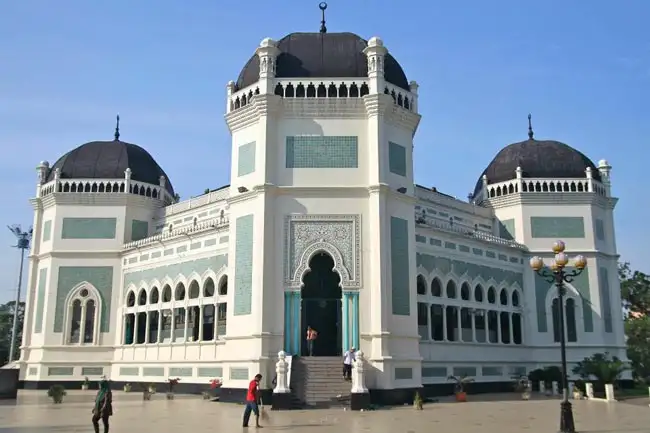
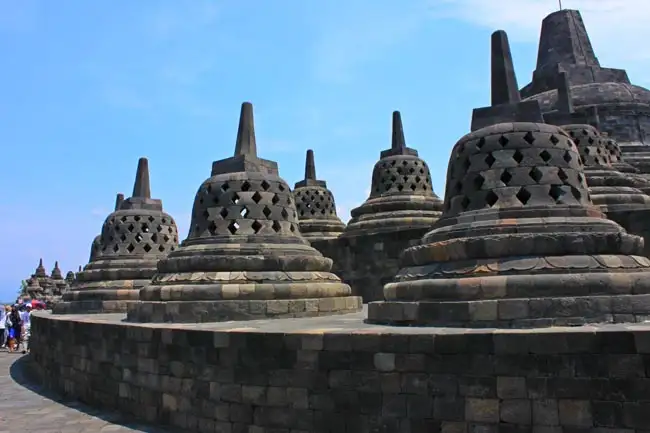

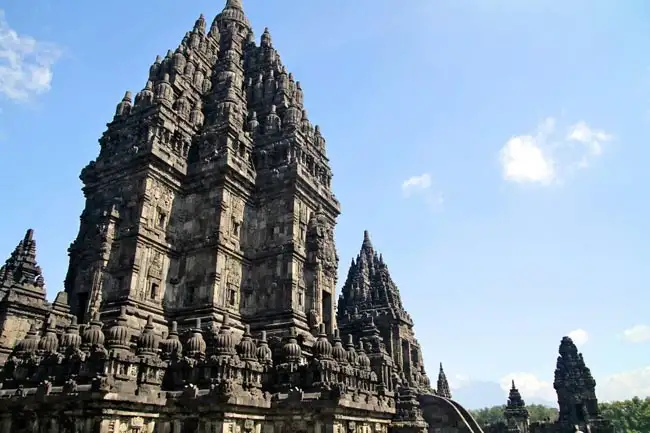
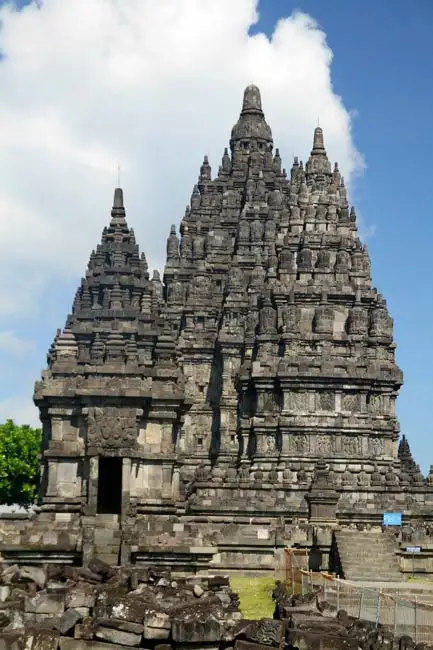


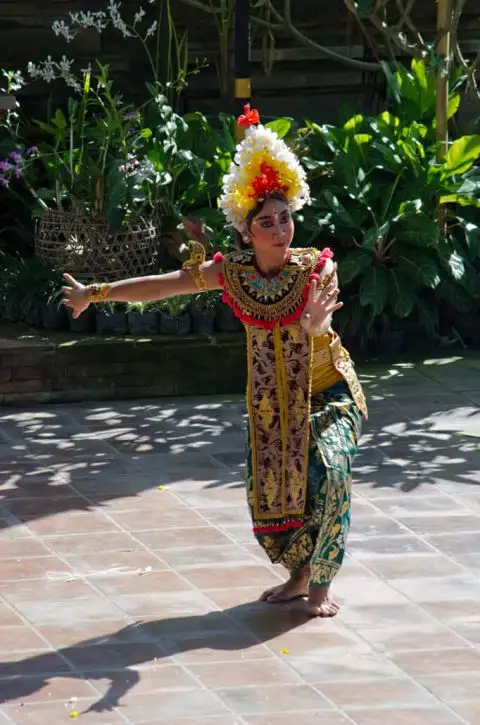
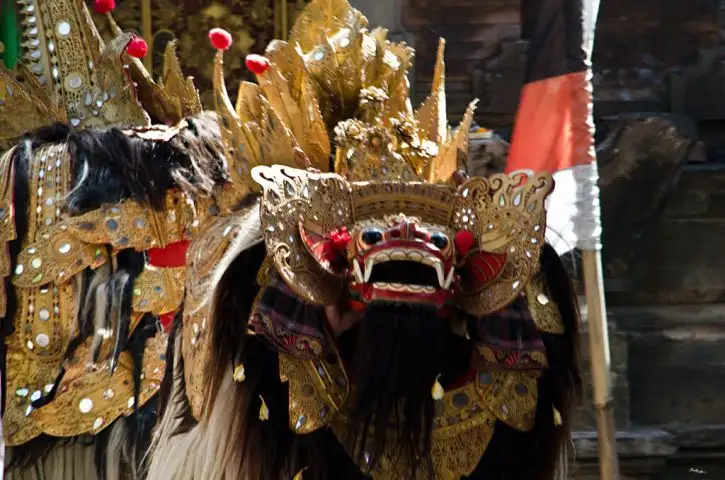

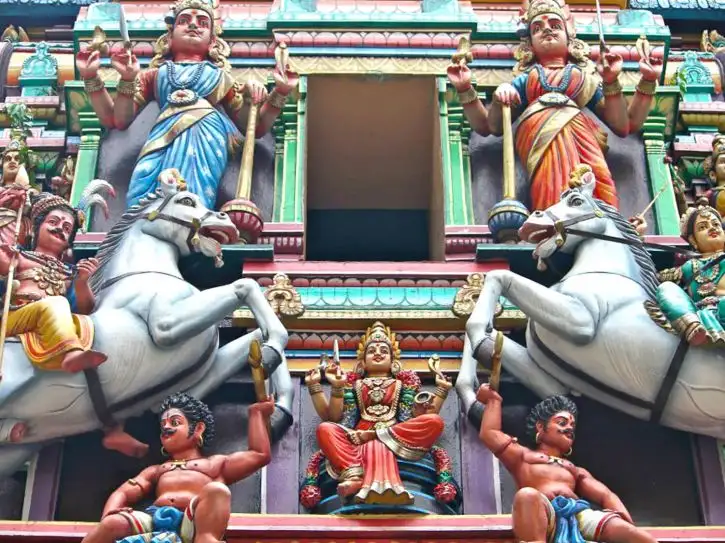
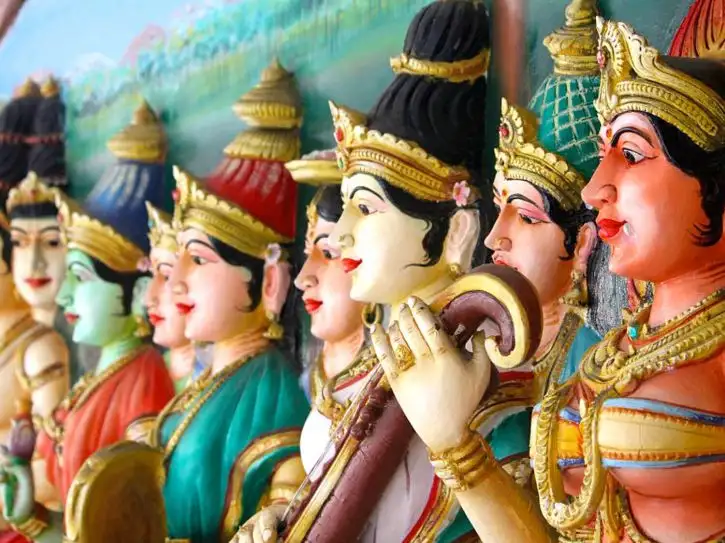

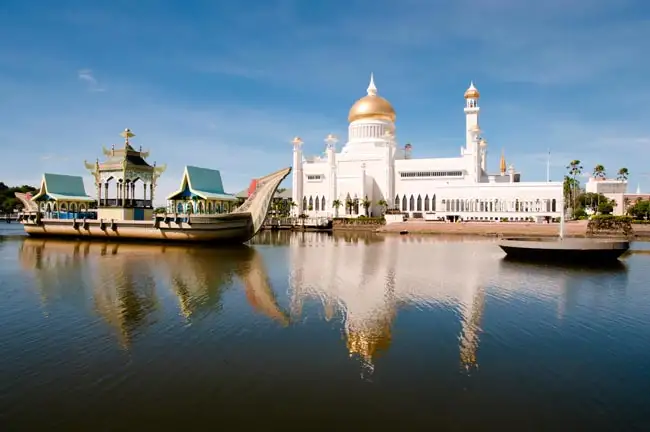


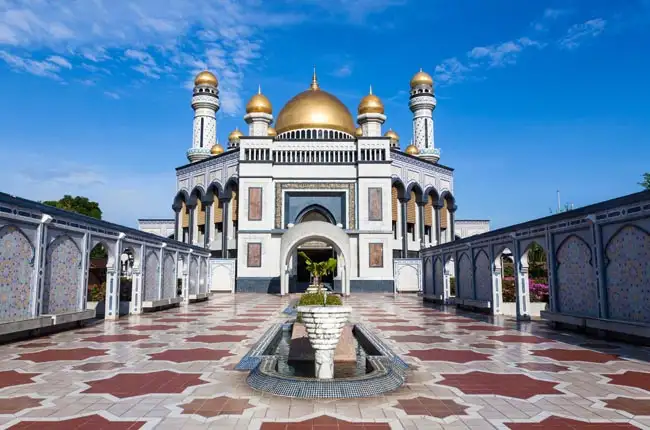
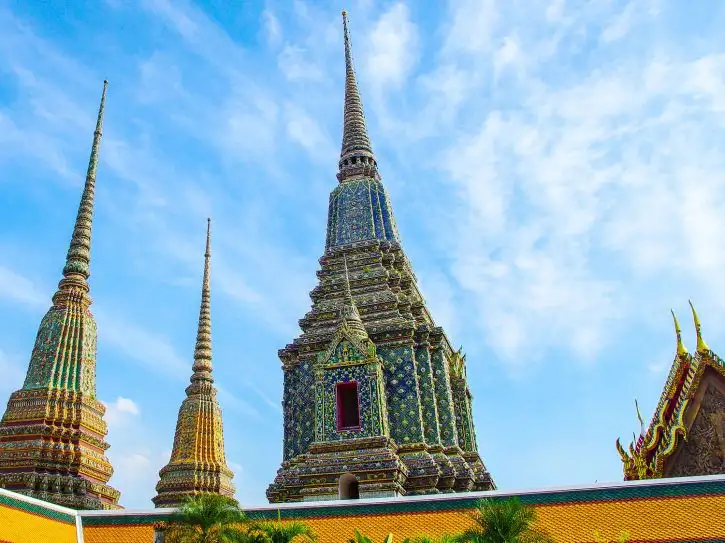


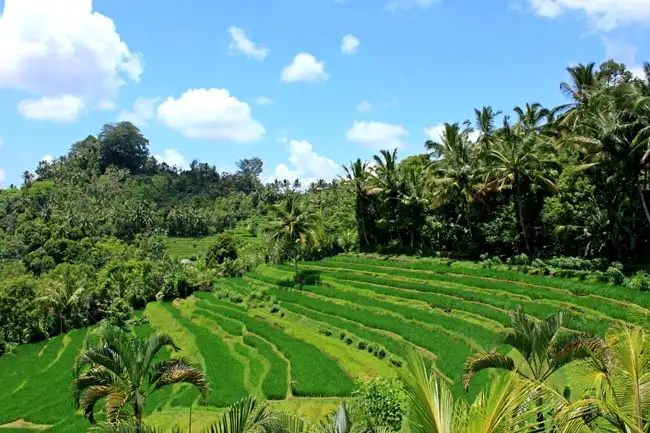
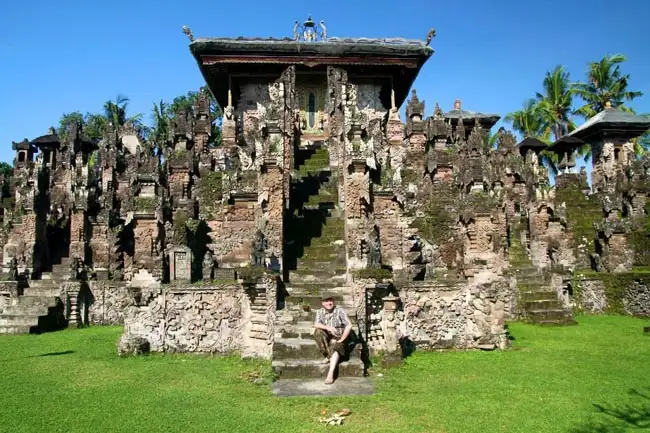
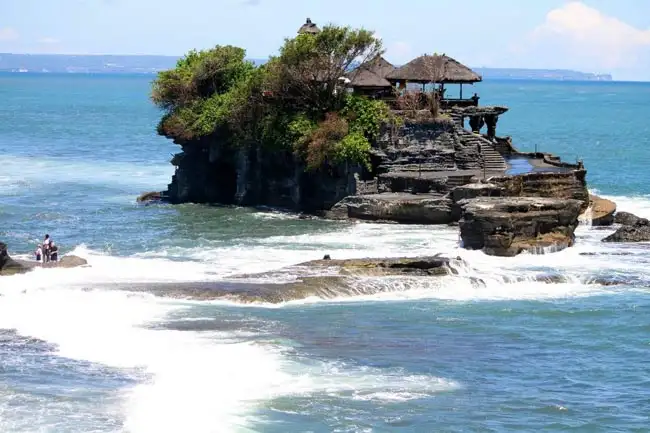

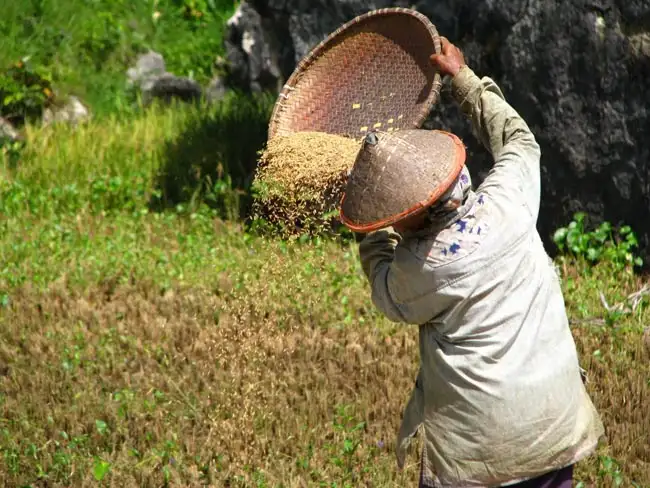

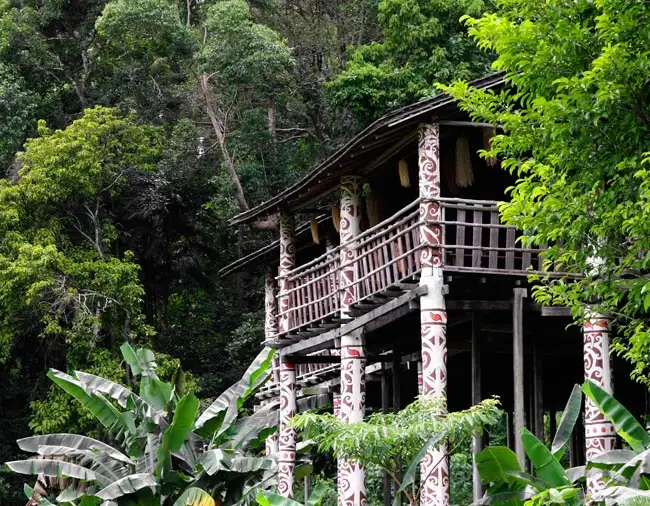
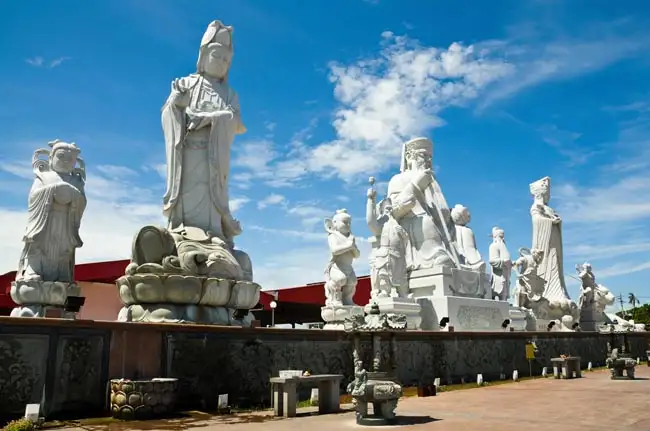


Excellent
Overall Rating
4.7
Extend Your Trip
This tour is part of a series that can be upgraded to make for a longer trip.
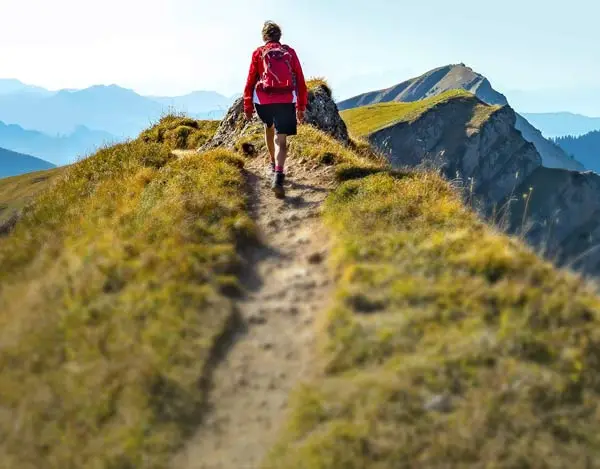
Fast and easy
Book This Tour
Book your unforgettable adventure today! For any questions or advice, don't hesitate to contact us.
Have questions?
1-800-665-3998
- Final payment: Due 90 days prior to departure.
- Deposit: A non-refundable $500 CAD Deposit is required at booking.
- Internal Flight Taxes: An extra $312 CAD applies for taxes and fees on tour flights. The internal airfares are included, but taxes are listed separately as they may change. Exceptions are noted in Red.
- Optional Single Supplement: $2640 CAD (number of singles limited).
(View options forsingle travellers) - Transfering Tour or Date: Transferring to another tour or tour date is only permissible outside of 120 days prior to departure and is subject to a $100 CAD change fee.
(Read our cancellation policy)
Choose your departure date:
Prices below are per person, twin-sharing costs in Canadian Dollars (CAD). Pricing does not include airfare to/from the tour and any applicable taxes.
Prices below are per person, twin-sharing costs in Canadian Dollars (CAD). Pricing does not include airfare to/from the tour and any applicable taxes.
Frequently Asked Questions
- What is the maximum number of participants on a trip?Most of our tours carry a maximum of 18 participants; some tours (ie hiking tours) top out at 16. In the event that we do not achieve our minimum complement by our 90-day deadline, we may offer group members the option of paying a "small-group surcharge" as an alternative to cancellation. If all group members agree, we will confirm the trip at existing numbers; this surcharge is refundable in the event that we ultimately achieve our regular minimum. If the small group surcharge is not accepted, we will offer a refund of your deposit or a different trip of your choice.
- Can I extend my tour either at the beginning or end? What about stopovers?Yes, you can extend your tour either at the beginning or the end and we can book accommodation in our tour hotel. Stopovers are often permitted, depending on air routing. Stopovers usually carry a "stopover" fee levied by the airline.
- How do I make a reservation? How and when do I pay?The easiest way to make a reservation is via our website; during office hours, you are also more than welcome to contact us by telephone.
A non-refundable deposit is payable at the time of booking; if a reservation is made within 90 days, full payment is required. Some trips require a larger deposit. If international airline bookings require a non-refundable payment in order to secure space or the lowest available fare, we will require an increase in deposit equal to the cost of the ticket(s).
Early enrolment is always encouraged as group size is limited and some trips require greater preparation time.
Once we have received your deposit, we will confirm your space and send you a confirmation package containing your trip itinerary, any visa/travel permit related documents, invoice, clothing and equipment recommendations, general information on your destination(s), and forms for you to complete, sign and return to us. Your air e-tickets (if applicable), final hotel list, final trip itinerary, and instructions on how to join your tour, will be sent approximately 2-3 weeks prior to departure. - What about cancellations, refunds, and transfers?Please review our cancellation policy page for details.
- I am a single who prefers my own room. What is a single supplement?All of our tours have a single supplement for those who want to be guaranteed their own room at each location.
This supplement is a reflection of the fact that most hotels around the world do not discount the regular twin-share rate for a room by 50% for only one person occupying a room. Most hotels will give a break on the price, but usually in the range of 25-30% of the twin-share rate. This difference, multiplied by each night, amounts to the single supplement.
The conventional amount can also vary from country to country and some destinations are more expensive than others for single occupancy. In order to be "single friendly," the supplements we apply are not a profit centre for us and we do our best to keep them as reasonable as possible.
On most tours we limit the number of singles available, not to be punitive, but rather because many hotels allow for only a limited number of singles; some smaller hotels at remote locations also have a limited number of single rooms available.
Please note that most single rooms around the world are smaller than twin-share rooms and will likely have only one bed. - Do you have a shared accommodation program?Yes! If you are single traveller and are willing to share, we will do our best to pair you with a same-gender roommate. Please note that should we fail to pair you, we will absorb the single supplement fee and you will default to a single room at no extra charge.
